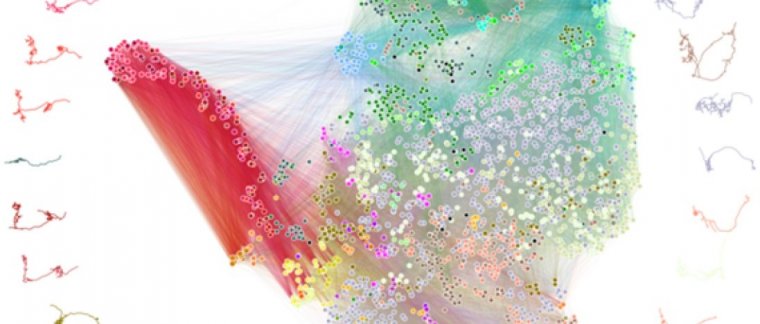| News / Science News |
Scientists complete first map of an insect brain
Researchers have completed the most advanced brain map to date, that of an insect, a landmark achievement in neuroscience that brings scientists closer to true understanding of the mechanism of thought.

A diagram depicting brain connectivity, where neurons are represented as points. Photo: Johns Hopkins University/University of Cambridge
The team, led by researchers at Johns Hopkins University and the University of Cambridge, produced a detailed diagram, or connectome, tracing every neural connection in the brain of a larval fruit fly, an archetypal scientific model with brains comparable to humans.
"If we want to understand who we are and how we think, part of that is understanding the mechanism of thought," said senior author Joshua Vogelstein of Johns Hopkins. "And the key to that is knowing how neurons connect with each other."
The team's connectome of a fruit fly, Drosophila melanogaster, is the most complete as well as the most expansive map of an entire insect brain ever completed. It includes 3,016 neurons and every connection between them: 548,000. Vogelstein said that "everything has been working up to this."
Mapping whole brains is difficult and extremely time-consuming, even with the best modern technology.
Getting a complete cellular-level picture of a brain requires slicing the brain into hundreds or thousands of individual tissue samples, all of which have to be imaged with electron microscopes before the painstaking process of reconstructing all those pieces, neuron by neuron, into a full, accurate portrait of a brain.
The researchers chose the fruit fly larva because, for an insect, the species shares much of its fundamental biology with humans, including a comparable genetic foundation. It also has rich learning and decision-making behaviors, making it a useful model organism in neuroscience.
And for practical purposes, its relatively compact brain can be imaged and its circuits reconstructed in a reasonable timeframe.
The team charted every neuron and every connection, and categorized each neuron by the role it plays in the brain. They found that the brain's busiest circuits were those that led to and away from neurons of the learning center.
The methods developed are applicable to any brain connectome project, and their code is available to whomever attempts to map an even larger animal brain, Vogelstein said, adding that despite the challenges, scientists are expected to take on the mouse, possibly within the next decade. (U.S. National Science Foundation)
YOU MAY ALSO LIKE





